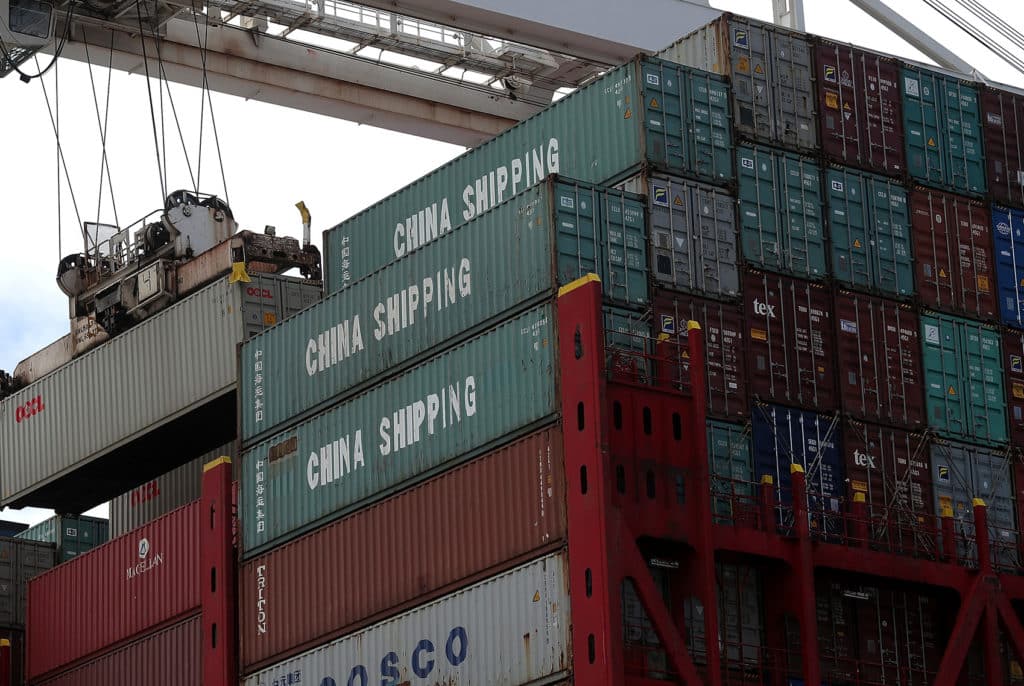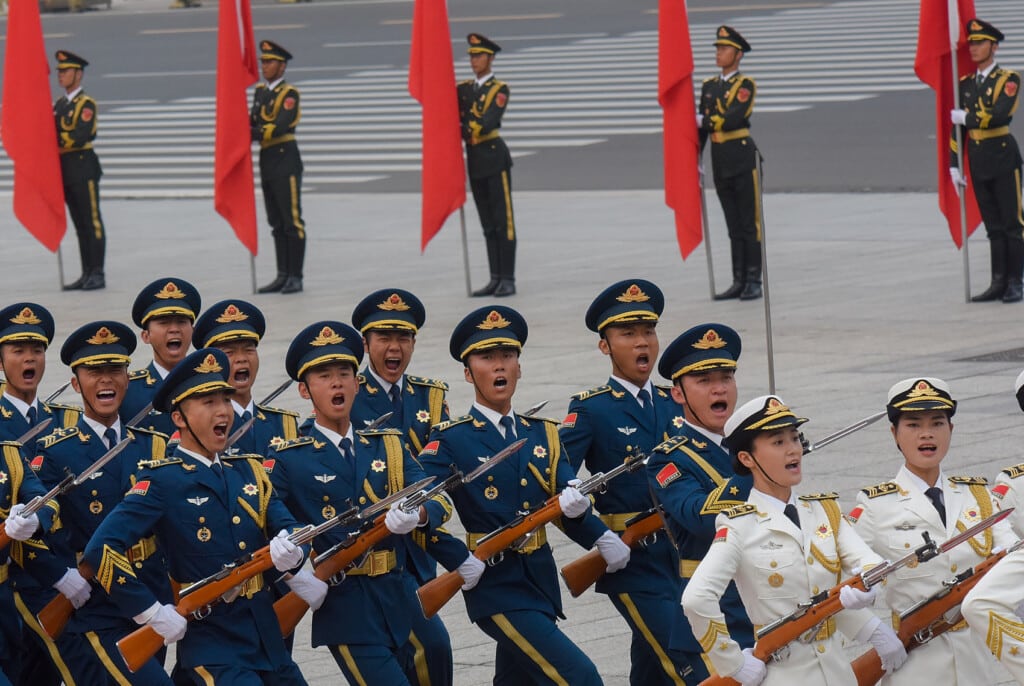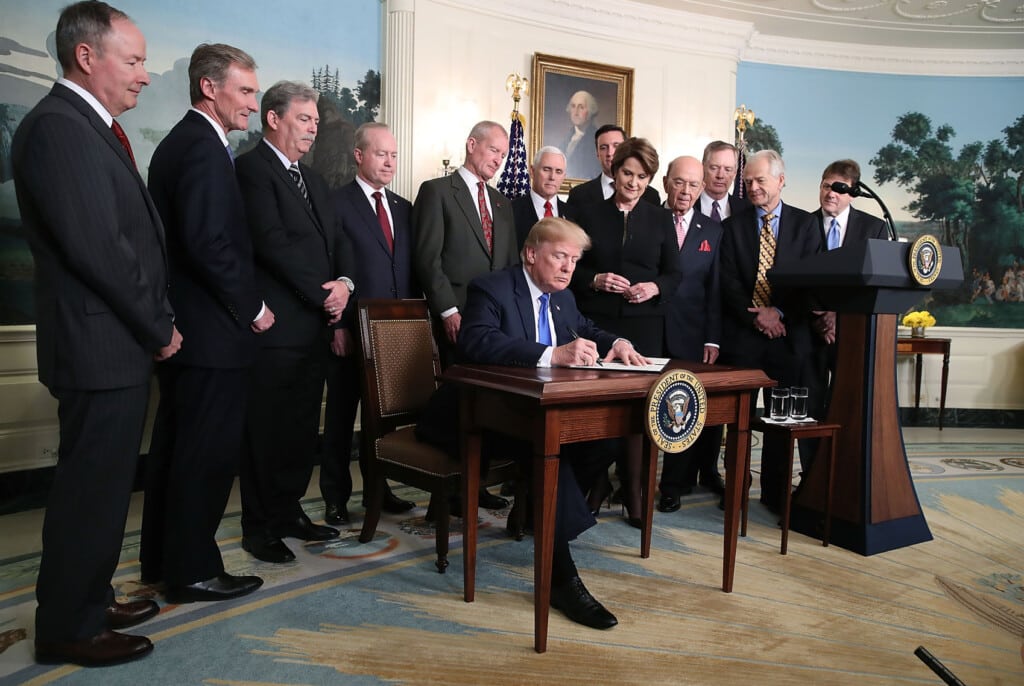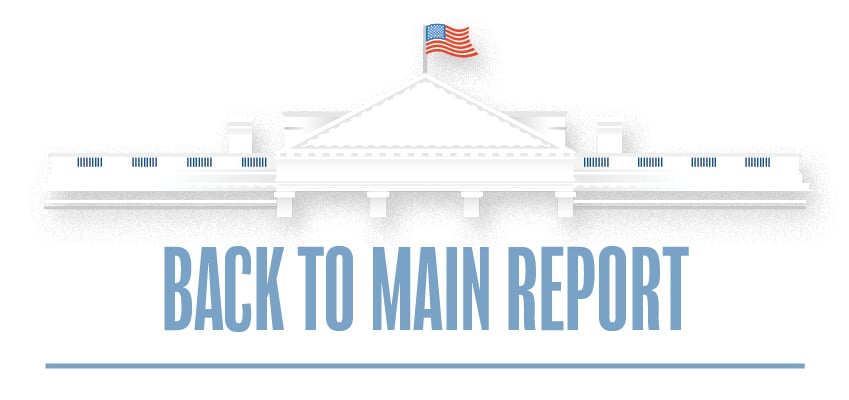January 31, 2019 |
Midterm Assessment: China
Contents
January 31, 2019
Midterm Assessment: China
Current Policy
“Every year,” says the Trump administration’s National Security Strategy, “competitors such as China steal U.S. intellectual property valued at hundreds of billions of dollars.” The purpose of Beijing’s centrally directed effort is not only to enrich China at our expense, but “to shape a world antithetical to U.S. values and interests.”1 According to the Pentagon, “The central challenge to U.S. prosperity and security is [this] re-emergence of long-term strategic competition” (emphasis in original).2
The Trump administration has described the threat from Beijing more starkly than its predecessors. In a landmark October 2018 speech,3 Vice President Mike Pence previewed what one scholar described as “the biggest shift in U.S.-China relations since Henry Kissinger’s 1971 visit to Beijing.”4 Pence described China’s comprehensive foreign policy as marked by military, economic, political, and ideological aggression against U.S. interests across the globe and within the United States. The U.S. once ignored China’s hostile actions, but Pence declared, “those days are over.”
To hold Beijing accountable for its predatory commercial practices, the administration has employed a range of measures, including tariffs on $50 billion of Chinese goods, which went into effect in August 2018. When China retaliated with tariffs on $50 billion of U.S. goods, President Trump raised the ante by extending U.S. import duties to an additional $200 billion of Chinese imports. China responded again with tariffs on another $60 billion of U.S. goods.5 As of December 2018, Trump and Chinese President Xi Jinping agreed to a tariff truce that gives their negotiators 90 days to reach a deal.
Beyond tariffs, the Department of Justice established a China Initiative designed to target Beijing’s economic espionage. In October 2018, the department announced the indictment of a Chinese state-owned company for attempting to steal billions of dollars in trade secrets from Micron, an Idaho-based semi-conductor company.
The Trump administration also called out China’s efforts to dominate East Asia by “using predatory economics to intimidate its neighbors while militarizing features in the South China Sea.”6 The administration has also relied on freedom of navigation operations to make clear that it does not recognize the legality of this militarization.
The administration has also developed and begun to implement its “Indo-Pacific Economic Vision” to counter China’s attempts to build global influence through its “One Belt One Road” initiative. The U.S. effort includes $113 million in direct government investment and additional loan incentives for private firms doing business in the Indo-Pacific. A key goal is to provide development assistance without the many, often draconian, strings that China attaches to its funding. The Better Utilization of Investment Leading to Development (BUILD) Act, passed on October 5, 2018, will be an important component to achieve these goals.

A shipping container is offloaded from the Hong Kong-based CSCL East China Sea container ship at the Port of Oakland on June 20, 2018 in Oakland, California. (Photo by Justin Sullivan/Getty Images)
Assessment
The Trump administration has effectively highlighted the seriousness of the challenge from Beijing, which some in the foreign policy community and general public tended to ignore until very recently. Looking ahead, the administration needs to refine its strategy for countering Beijing.
Escalating tariffs have so far had limited negative effects on key macroeconomic indicators in the U.S., whereas China has suffered more significant setbacks. China’s GDP growth has gradually decelerated, with the Shanghai stock exchange losing more than 25 percent of its value in 2018. Still, individual firms face substantial costs because Chinese goods cost more and Chinese tariffs damage U.S. exports. In late 2018, growing fears of a full-scale trade war contributed to escalating volatility in the U.S. stock market. Fears of a U.S. recession in 2019 or 2020 may reduce U.S. leverage.
The administration also disrupted its own focus on China’s unfair policies by initiating trade disputes with longstanding partners in North America, Europe, and Asia. Abandoning the Trans-Pacific Partnership (TPP) has also made Washington’s strategy to counter China more difficult to implement successfully. However, the administration did secure an important clause in the new United States, Mexico, Canada Agreement (USMCA) prohibiting parties from entering into a new free trade agreement with non-market economies like China.7
Beyond tariffs, the Trump administration has drawn greater attention to Beijing’s concerted effort to erode America’s innovation base. The National Security Strategy correctly identified the threat of cyber-enabled economic warfare, in which an adversary seeks to undermine the economic foundation on which our national security rests.8 In response, Congress succeeded in passing the Foreign Investment Risk Review Modernization Act (FIRRMA), which broadens the scope of oversight exercised by the interagency Committee on Foreign Investment in the United States. The administration also launched a widespread campaign against key Chinese companies deemed to pose the greatest cyber threat to U.S. interests, especially the telecommunications giants Huawei and ZTE. Britain’s largest telecom service provider, BT, also decided to remove Huawei’s equipment from its existing 3G and 4G wireless networks and will bar Huawei’s products from participating in the core of its 5G networks. Additionally, Australia, New Zealand, Japan, and potentially Canada have restricted Huawei’s access to their markets.
However, the administration needs to continue to work to convince the U.S. private sector of the threat China poses, and of the need to work with the U.S. government to counter that threat. To date, certain major U.S. corporations, particularly those in the high-tech sector, have evinced an unwillingness to cooperate with U.S. defense and intelligence agencies to jointly develop key technologies important in the strategic competition with China, such as artificial intelligence and quantum computing.
As China continues projecting power by militarizing the South China Sea, the Trump administration arguably has not crafted a cohesive strategy to counter Beijing’s provocative actions there. Although the Navy has undertaken freedom of navigation operations and the administration has continued arm sales to Taipei and increased defense commitments to India, China’s militarization has continued apace.
In North Korea, Trump’s maximum pressure campaign succeeded in winning unprecedented Chinese cooperation on sanctions in 2017. But as Trump turned to direct diplomacy with North Korea in 2018 and tensions eased, Chinese sanctions enforcement appears to have weakened.9
The State Department continues to report that Beijing relies on torture, forced disappearances, pervasive censorship, and severe repression of activists to preserve its grip on power.
One area that has not received enough attention is China’s human rights abuses. The State Department continues to report that Beijing relies on torture, forced disappearances, pervasive censorship, and severe repression of activists to preserve its grip on power.10 Most notably, the Chinese government’s detention of approximately one million Uighur Muslims in the Xinjiang region is a landmark example of China’s human rights abuses.11 To date, the administration has not taken sufficient action in response to these abuses.

Members of a Chinese military honor guard shout outside the Great Hall of the People on September 13, 2017 in Beijing, China. (Photo by Etienne Oliveau/Getty Images)
Recommendations
- Finalize trade agreements in Europe and Asia that include provisions prohibiting free trade agreements with non-market economies like China. Our European and Asian partners also have much to fear from China’s predatory practices. Working together against those practices should be paramount.
- Help Asian allies upgrade their capabilities to defend against Chinese naval aggression. The U.S. must do more to empower regional allies to counter China’s coercive efforts in the South China Sea in addition to ongoing freedom of navigation operations. The Trump administration should consider establishing new multinational exercises in the South China Sea to help U.S. allies expand their capabilities and capacity.
- Exercise leadership in key multilateral forums, including ASEAN, APEC, and the East Asia Summit. Our allies feel more confident when the United States drives the agenda inside these forums. Senior level U.S. officials – including the president – should take an active role in these forums.
- Emphasize human rights in both bilateral and multilateral forums. Consider funding for international broadcasting programs and other efforts to evade censorship. The administration should act swiftly to address Beijing’s incarceration in re-education camps of up to one million Chinese Uighurs in western China’s Xinjiang province. In August 2018, a bipartisan group of senior lawmakers sent a letter to the secretary of state and secretary of the Treasury urging the administration to impose sanctions against Chinese officials overseeing this draconian program, yet the administration has yet to act.
- Hold China accountable for easing North Korea sanctions enforcement as well as providing a safe haven for North Korean illicit activity through front companies and financial institutions within its borders. Washington should consider additional punitive measures against such entities and individuals if they continue violating existing UN and U.S. sanctions.
- Carefully monitor Beijing’s compliance with U.S. sanctions on Iran, in particular the proper use of escrow accounts holding Chinese payments for Iranian oil. In the past, Iran pursued elaborate money laundering schemes, often with the complicity of foreign officials, to exfiltrate hard currency from its escrow accounts.

U.S. President Donald Trump is flanked by members of the business community as he signs a presidential memorandum aimed at what he calls Chinese economic aggression in the Roosevelt Room at the White House on March 22, 2018 in Washington, DC. (Photo by Mark Wilson/Getty Images)
